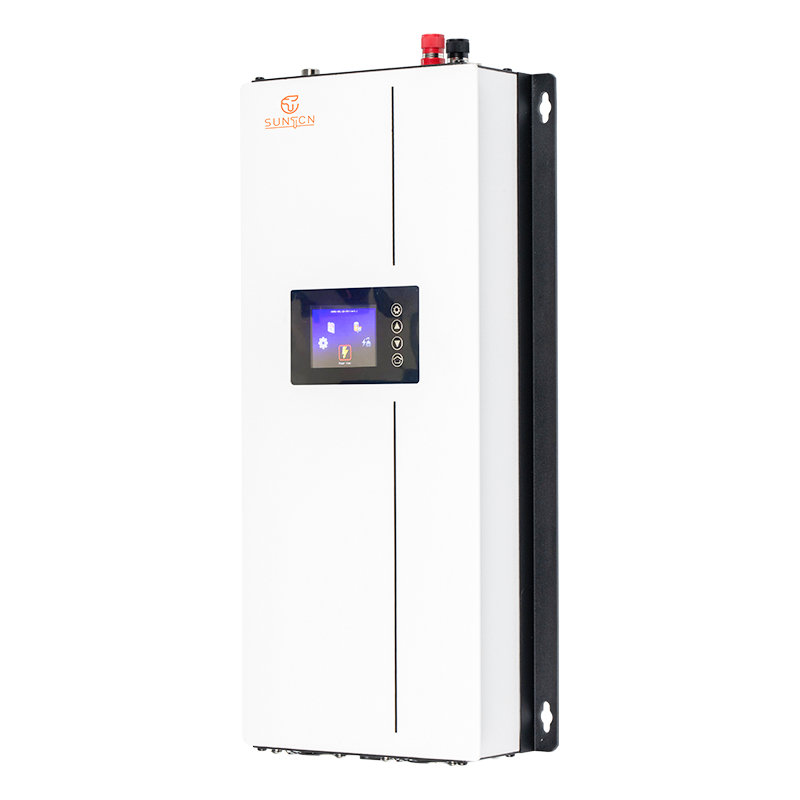With the growing global demand for renewable energy, solar power generation systems have become an important part of achieving green energy transformation. As one of the core equipment of solar power generation systems, solar grid-tied inverters are promoting the popularization and application of clean energy with their high efficiency and intelligence. It not only converts solar energy into usable electricity, but also provides stable and reliable energy solutions for homes, businesses and communities through seamless connection with the power grid.
Solar grid-tied inverters usually include power point tracking (MPPT) technology, grid synchronization control, and a variety of protection functions to ensure the safety and efficiency of the system.
How solar grid-tied inverters work
The working process of solar grid-tied inverters can be divided into the following steps:
Solar energy collection: Solar panels convert sunlight into direct current.
DC to AC conversion: The grid-tied inverter converts direct current into alternating current that meets grid standards.
Grid synchronization: The inverter ensures synchronous operation with the grid by precisely controlling the output voltage and frequency.
Power distribution: Prioritize local load demand, and excess power is transmitted to the grid, and users may receive electricity fee reductions or subsidies.
This closed-loop system not only improves energy utilization, but also reduces dependence on traditional fossil fuels.
Advantages of solar grid-tied inverters
Efficient energy conversion
Modern grid-tied inverters usually have a conversion efficiency of more than 95%, which can maximize the conversion of solar energy into usable electricity and reduce energy losses.

Cost savings
Since there is no need to configure expensive battery energy storage systems, the initial investment cost of grid-tied inverters is low, and excess power can be sold to the grid, further reducing users' electricity bills.
Environmentally friendly
Grid-tied inverters support the direct use of clean energy, reduce carbon emissions, and contribute to environmental protection.
Intelligent management
Many grid-tied inverters are equipped with intelligent monitoring systems, and users can view power generation, system status and revenue in real time through mobile phones or computers, which is convenient for management and optimization of energy use.
High reliability
Grid-tied inverters are designed with a variety of protection functions, such as overvoltage protection, short circuit protection and anti-islanding protection, to ensure the safe operation of the system under various working conditions.
Easy to install and maintain
Grid-connected inverters are compact and easy to install, and models have automatic fault diagnosis functions, which reduces the difficulty of maintenance.
Application scenarios of solar grid-connected inverters
Residential solar systems
Household users can connect rooftop solar power generation systems to the grid by installing solar grid-connected inverters, which can not only meet their own electricity needs, but also sell excess electricity to the grid, achieving energy self-sufficiency and economic benefits.
Commercial and industrial facilities
Large buildings such as factories, shopping malls and office buildings can make full use of solar power generation through grid-connected inverters, significantly reduce operating costs, and enhance the company's sustainable development image.
Public infrastructure
Public facilities such as schools, hospitals, and government buildings can use solar grid-connected systems to provide clean electricity to society while reducing public fiscal expenditures.
In some remote areas or communities, solar grid-connected inverters can be combined with other energy forms to build distributed microgrids to provide residents with a stable power supply.
Agriculture and rural electrification
Agricultural irrigation, greenhouse planting, and power supply in rural areas can all be achieved through solar grid-connected systems, helping rural revitalization and green development.
How to choose the right solar grid-connected inverter?
When purchasing a solar grid-tied inverter, you need to make comprehensive considerations based on actual needs and system size:
Power capacity
Choose a suitable inverter power range based on the total power and power demand of the solar panels to ensure the good match for the system.
Efficiency and performance
Check the inverter's conversion efficiency, MPPT tracking accuracy, and whether it supports multiple input voltage ranges, and choose high-performance products.
Brand and quality
Give priority to products from well-known brands, and check whether they have passed relevant certifications (such as CE, UL or TÜV) to ensure quality and safety.
Smart functions
If remote monitoring and data analysis functions are required, choose smart inverters that support Wi-Fi, Bluetooth or other communication protocols.
Environmental adaptability
Consider whether the inverter is waterproof, dustproof and high-temperature resistant, especially when used outdoors or in harsh environments.
After-sales service
Find out whether the supplier provides comprehensive after-sales service and technical support for subsequent maintenance and troubleshooting.
Solar grid-tied inverters are key equipment for achieving efficient use of solar energy. They not only promote the popularization of clean energy, but also bring users both economic and environmental benefits. With technological advancement and policy support, solar grid-connected systems will be widely used in more fields, contributing to global energy transformation and sustainable development goals.

 English
English Español
Español Deutsch
Deutsch










